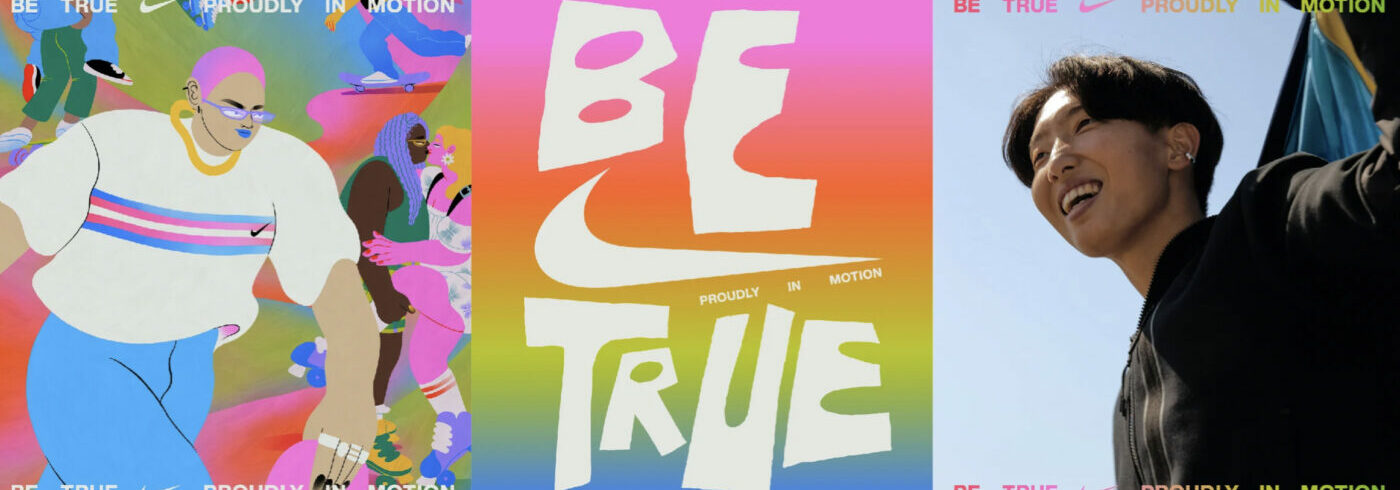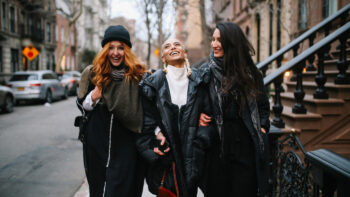
Nike, M&S and Fenty Beauty | 3 Gen Zers Share Which Brands They Love for Their Diversity
Article Highlights
Be the first to access new posts and exclusive content
Diversity and inclusion is a cause that’s important to nearly every single Gen Zer, and it’s something that we talk about a lot at Voxburner. Which communities are your brand impacting and how can you best support them? How can you make your workplace as safe and welcoming as possible for employees and how can your campaigns become champions of DE&I?
We recently spoke to three passionate and inspiring young people about diversity and inclusion and what it means to them. Carry on reading to find out which brands they think are diverse, and which have quite a way to go…
https://www.instagram.com/p/CP1Sb_jFzoZ/?utm_source=ig_embed&ig_rid=f0c350a1-ea43-49d9-b7e3-7697ca72333bWhat brands are diverse and why?
- “Nike, because they have a campaign called BE TRUE through which they’ve donated over £5,000 to LGTBQ+ communities from the products that they sold and I think that … support for those young people who are part of those communities is needed so much more” Lottie Henderson
- “Fenty Beauty – it’s a makeup brand that includes all races, all ethnicities and all abilities in their campaigns and even behind the scenes. I truly believe in that brand as being inclusive and diverse.” Uzo Ndukuba
- “Marks and Spencer because they introduced an adapted clothing line for disabled young children. They worked with disabled children’s parents to discuss the requirements of the children and come up with velcro shoes, I think feeding tube-friendly clothing and stuff which really helps them feel comfortable as well as helping them carry out their day-to-day activities.” Aradhana Krishna Rao
Case Study: Fenty Beauty
Launched in 2017, Fenty Beauty is the brainchild of its superstar founder Rihanna. The makeup and skincare brand hit the headlines and soared to popularity almost instantly thanks to its large (and previously unseen) range of foundation shades – now almost 50+.
Before Fenty Beauty, the beauty industry was notoriously catering towards white beauty ideals, and, in the words of Vogue, Fenty Beauty ‘completely changed the beauty industry. The brand recognised and connected with people across the world who had previously felt unseen by the industry.
The brand also exhibited the huge spending power that these communities have, reportedly making over $100m in the first month. Following Fenty’s launch, more massive beauty brands began to expand their colour palettes – although the motives behind these decisions are still up for discussion. After all, as Vogue go on to say: ‘..every savvy brand – and not just those in the beauty industry – is aware that without an inclusivity strategy, they have no growth strategy.’
There’s undoubtedly still a long way to go for the industry, with many makeup artists only knowing how to work with white skin and some models even having to apply their own makeup on sets. However, Fenty Beauty has certainly set us and the industry in the right direction.
What brands aren’t doing as well?
- “Last year for Pride, [M&S] created a sandwich called the LGBT+, which was lettuce, guacamole, bacon and tomato. My identity is not defined by a piece of lettuce. I am not a piece of lettuce, why are you gonna use so much a big community to market your sandwich?!” Lottie
- “I’d say Charlotte Tilbury would be a brand where I regularly see their adverts and they do include people of colour [in their marketing], but when you look at their range, it’s not as inclusive as they portray it to be. That’s definitely a brand that has a lot of room for improvement and can learn from Fenty Beauty.” Uzo
- “I think a lot of companies work on diversity but not the inclusive aspect, and when you look at their board members there’s a lack of racial representation as well as gender representation. These things are really important because also these things do matter when they come up with products. A diverse group means that they know what different people require.” Aradhana
Case Study: The M&S LGBT+ sandwich
M&S launched their LGBT+ sandwich in the summer of 2019 as a way of celebrating Pride and raising money for charity, but as Lottie touched upon, it was met with mixed reactions.
The sandwich, made up of lettuce, guacamole, bacon and tomato, was available to buy in the UK and Ireland, and came in rainbow-inspired packaging. The sandwich was created to raise money for the Albery Kennedy trust (AKT) and BeLon to Youth Services, both of which support young LGBTQ+ people in the UK and Ireland respectively.
I have bigger things to worry about than an M&S sandwich that helps support LGBT+ charities. The culture of people desperately seeking offence in EVERYTHING literally needs to stop.
— Dr Liam Hackett MBE (@DiageoLiam) May 5, 2019
Some welcomed the sandwich with open arms, praising the brand for raising awareness and a tasty way. However, some said they were made to feel uncomfortable, accusing M&S of downplaying the issues and struggles the community has faced and exploring the LGBTQ+ community to make money.
Biting into my M&S LGBT sandwich, tears trickling down my cheeks, whispering to myself: “we made it”
— Cathy Brennan (@TownTattle) May 3, 2019
AKT responded to the backlash on Twitter, writing: ‘AKT is proud to have the support of rands like Marks and Spencer, as without it, we couldn’t do what we do.’
The brand had faced controversy the previous year with its launch of the Rainbow Sandwich during Pride 2018.
Our conversation with Aradhana, Lottie and Uzo took place during a Voxburner+ deep dive which will soon be available to rewatch on Voxburner+.
Subscribe to Voxbrurner+ now to access the latest reports, exclusive stats and a network of leading youth marketers here.
(Cover 📸: Nike’s website)


